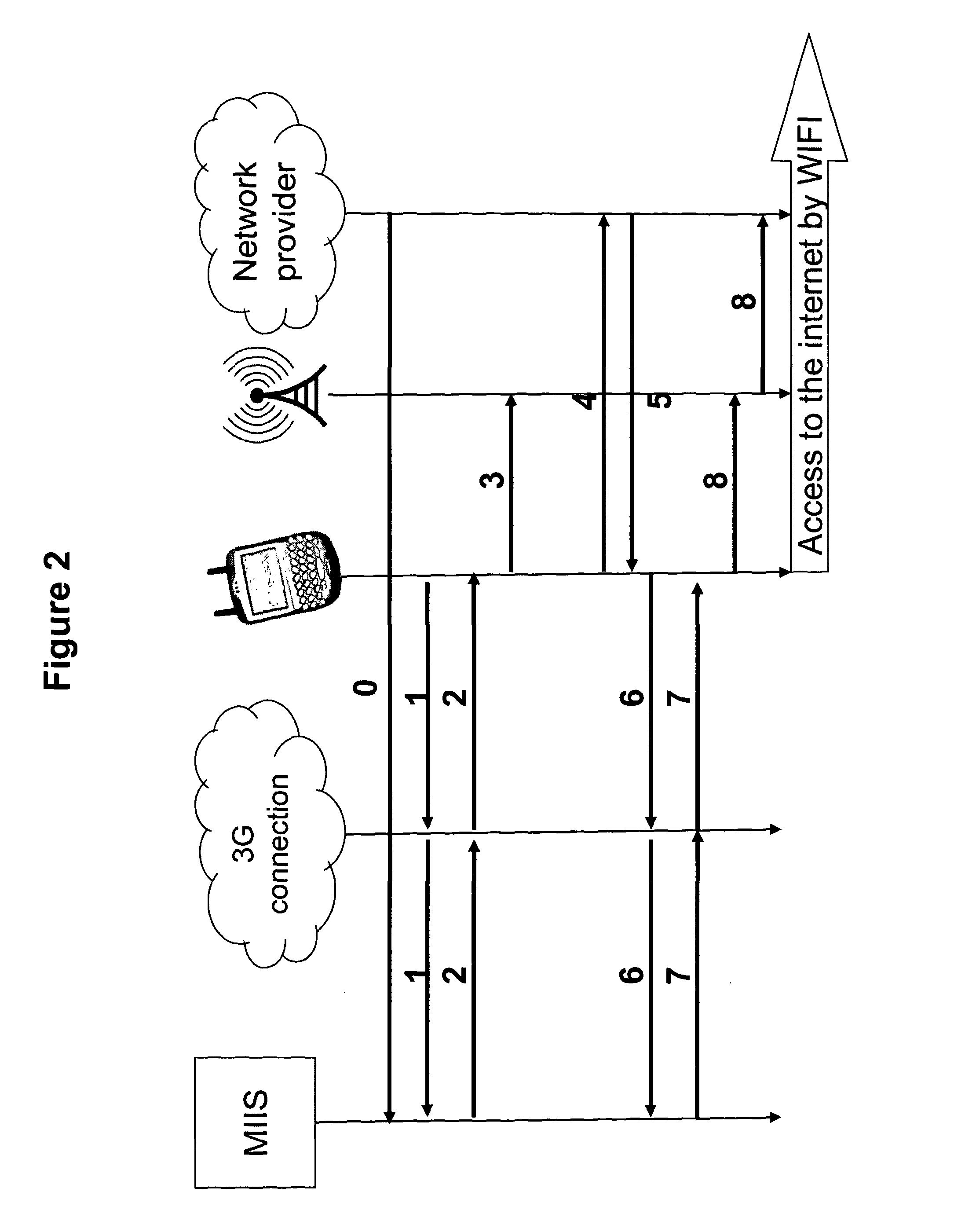Method and system for authenticating a point of access
a technology of access point and authentication method, applied in the field of wireless network security, can solve the problems of inconvenient tracerouting, known methods remain vulnerable to a so-called man-in-the-middle attack, and the inherent security risk of wireless networks, so as to prevent users from spoofing indicative data
- Summary
- Abstract
- Description
- Claims
- Application Information
AI Technical Summary
Benefits of technology
Problems solved by technology
Method used
Image
Examples
first embodiment
[0055]A first embodiment will now be described in relation to FIG. 1. The numbers in the figure relate to the steps described below.
[0056]A user having a wireless device wants to access the Internet and therefore triggers his device to scan for available networks in the surroundings. The user of the mobile device could alternatively connect to the information server and request a list of available networks and access points in the area. The authentication process of an access point is as follows:
[0057]1. The wireless device selects an access point.
[0058]2. The connection manager in the wireless device connects to the access point and requests, as instructed by the installed security program, an authentication message from the network provider (NP). The request incorporates an identifier for the wireless device sending the request. Preferably, the current IEEE 0.11 association request is used also as the request for an authentication message. 802.11 is the Wifi standard so this is a ...
third embodiment
[0081]A third embodiment will now be described with reference to FIG. 3.
[0082]The difference between this embodiment and the second embodiment is that the access point requires a WEP / WPA key authentication in order for the wireless device to first authenticate to the access point, before authenticating to the network provider. The third embodiment operates identically to the second embodiment, save for the MIIS' reply in step 2 also providing the AP's encrypted WEP / WPA Authentication Key and in step 4 the connection manager sending the appropriate WEP / WPA key to the AP for authentication.
second embodiment
[0083]Once authenticated, the connection manager in the wireless device will request, step 5, an authentication message from the network provider (NP) in the same way as described in the
[0084]Steps 6-9 in FIG. 3 correspond to the steps 5-8 in the second embodiment and the device will follow these steps to authenticate to the network provider and access the Internet.
[0085]The described embodiments provide several security measures that will improve the security in wireless networks.
[0086]As a first security measure, by incorporating the MAC address of the wireless device requesting the authentication message in the encrypted authentication message, the MIIS, or other interface identifier comparison means, will be able to compare that MAC address with the MAC address received directly from the device; to detect that a rogue wireless device or a rogue AP has sniffed and captured either the request for an authentication message from a wireless device or the encrypted authentication mess...
PUM
 Login to View More
Login to View More Abstract
Description
Claims
Application Information
 Login to View More
Login to View More - R&D
- Intellectual Property
- Life Sciences
- Materials
- Tech Scout
- Unparalleled Data Quality
- Higher Quality Content
- 60% Fewer Hallucinations
Browse by: Latest US Patents, China's latest patents, Technical Efficacy Thesaurus, Application Domain, Technology Topic, Popular Technical Reports.
© 2025 PatSnap. All rights reserved.Legal|Privacy policy|Modern Slavery Act Transparency Statement|Sitemap|About US| Contact US: help@patsnap.com



